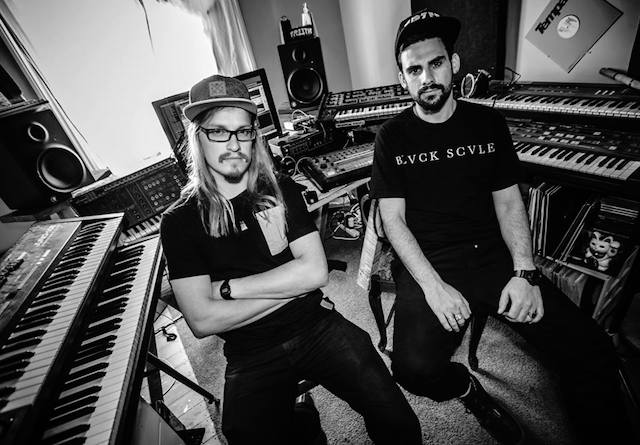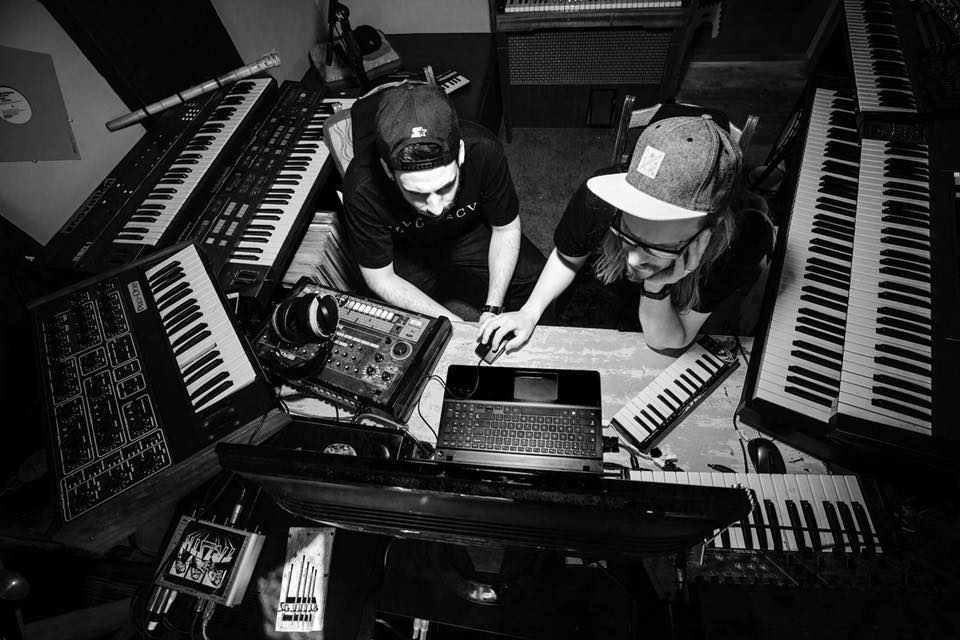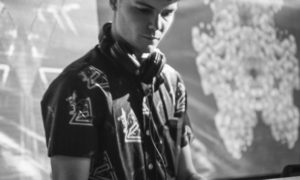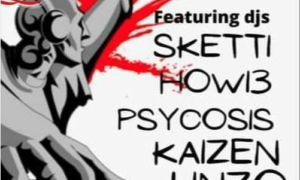
“DDD [Deep, Dark, Dangerous] was all about good sound, small capacity, minimal visual stimulation and letting the music do the talking,” Tristan Roake of the New Zealand dubstep duo Truth explains how they found their niche in the stateside club scene. In this interview, we talked with Tristan about the inspiration for Truth’s bass-heavy sound, the differences in the U.S. verses international markets, and the pros and cons of different DJ gear. There is really some good knowledge to be learned here!
In one of very few southeastern stops on the U.S. tour, Truth comes to Jacksonville, FL on Sunday, August 21st at Myth Nightclub. We’re honored to have them in Florida for what’s promising to be a monumental show. Read the in-depth interview below and purchase tickets here.
Through the ever evolving electronic, and more specifically dubstep genre, Truth’s music has consistently held true its sanction of deep, dark, and yet upbeat melodic bass-heavy composition without selling out to the next big fad. Can you describe your niche, A.K.A. “dubstep in it’s purest form”, and how it sets you apart from the rest?
We make the kind of music that we would want to listen to. That’s one of the things that has always driven us to create. You actually captured our sound quite well in your question, although we would substitute the word “dangerous” for “upbeat.” We like music on the darker end of the spectrum, but still with melody. It’s also very bass heavy, music made for sound systems! We are also big fans of cinematic music, especially from horror movies (both good and bad, old and new). So this has had a big influence on our sound as well.
You recently released the “DDD Vol. 1” album – with each project you guys seem to get even more darker and complex. Where do you think your future sound is going?
We honestly don’t know what the future holds, we just plan on staying on our path of making and playing music that we enjoy. A lot of the stuff we make and play isn’t necessarily dark either, we have a lot of dubby influences in there and make / play tunes that are more about fun, and making people dance. The one goal we will always have of course, is improvement, there’s always room to get better at what you love.
Explain the “War of the Minds (MEDi092)” project. Is the full version out yet?
MEDi092 is out already! It’s available on vinyl and digital. It’s an EP which we recently released on Deep Medi Musik, which has always been one of our favorite labels.

A majority of the legitimate talent brought to the electronic scene in North America stems from Europe and especially New Zealand and Australia. Since relocating to San Francisco, how does the underground music scene of your roots differ from that of the U.S.?
The underground and especially the bass-heavy side of the spectrum has had a very strong presence in New Zealand for a long time. NZ was long regarded as one of the ‘go to’ places for big Drum n Bass acts to tour from the mid 90’s and up until now. The scene there is still very strong, and when dubstep was in its infancy, New Zealand was certainly one of the early adopters of the sound outside the UK.
While we now no longer live in San Francisco – Dre is in Los Angeles and I reside back in NZ – the bass music scene in San Francisco also has very strong roots. Pre-brostep, SF had a strong and vibrant dubstep scene which was incredibly healthy.
By the time we moved stateside however, that had been swept aside by the brostep craze and there were really only a few bastions keeping it underground, regular nights such as Ritual for example. That is one of the reasons we founded our ‘Deep, Dark & Dangerous’ night in SF, to provide something of a contrast to the loved-up glowstick madness that dubstep had become. DDD was all about good sound, small capacity, minimal visual stimulation and letting the music do the talking.
You’ve received a big cosign from DATSIK, as well as many other DJs/producers in your genre. Tell us how you came in contact with DATSIK. Have you worked with him yet?
We used to run a promotion company in our home town, mostly bringing DnB artists on tour around NZ and Australia. Very early on in Datsik’s career we brought him on tour around NZ and became good friends. We also got in the studio and made some music together, a couple of tracks “Too Late” and “No Chance” were released.
So you and Dre both met in the D&B scene – when did you realize you could make some really great music together?
We both made music independently for a few years but at the same time we were running the promotion company. During that time a lot of people in the scene came to recognize our crew as a single entity. We’d be booked at shows as the crew and stuff like that, so pretty naturally we started making beats together. We’ve actually been making music together for a long time now, 15 years or something ridiculous, so to try to point to a particular moment would be difficult. It’s the point where you can take criticism from your fellow producer and instinctively trust that what they are saying is going to make the track better than before without having to question it.
With both of you producing together, how do your styles differ from each other, and yet end up coming together in harmony?
It’s something we have come to slowly to be honest. It helps that we are into making the same kind of music as one another. At first when you work with someone there can be a bit of a clash, but we’re at the point where we will take each other’s advice seriously and follow it. It would be hard to pinpoint our stylistic differences. Dre is really good at looking at the bigger picture and finding stuff that makes a track pop, I have a more musical background so I always try to make sure everything sounds nice and usually get more involved in the fine details at the end of the track. But having said that, we are equal in the production responsibilities – in contrast to a lot of duos where often one person in the team handles production while the other DJs and performs.
Spinning vinyls and playing off a MIDI are totally different, yet the same, in and of themselves; what are some pros and cons of each?
We’ve never tried using midi controllers. For a long time we played vinyl sets, then we discovered Serato which let us play our own freshly-made tracks while still using records. Now we use CDJs with USB sticks.
The reason we made the switch from turntables to CDJs was simply reliability. Too many places we would tour at just had shoddy or poorly maintained 1200s which is a real shame. So it just wasn’t good enough for us to turn up somewhere and barely be able to play. The crowd doesn’t care what the technical reason is, they just know they missed out on a good show.
Once we switched from Serato on turntables to Serato on CDJs it pretty much defeated the point of using Serato in the first place. So within a year we were just touring with USB sticks. This was the best move ever. Much more reliable, nobody is gonna spill a drink on your laptop and end the gig. Also so often you watch a person using a laptop on stage and without realizing it they spend half their set staring at a screen. It’s terrible for crowd interaction!
Vinyl:
We love vinyl. The best thing about using records live is that you can literally just grab the track you want. It’s way more tactile and your brain makes an association between the feel of the music and the look of the record sleeve.
The worst things about vinyl is the weight – try carrying two hours worth of set around with you! It’s also susceptible to scratches if you aren’t careful. It takes a lot longer to sound check and a lot of clubs these days aren’t used to setting up for it properly, so you end up with things like bass feedback and jumpy needles.
Serato / controllers:
They’re great for when you have a massive library you quickly want to search. And for pre-preparing sets and routines – if you are into that, we tend to freestyle it. They’re not so good when you come across annoying technical issues – which happen more than you’d like to imagine – or when someone decides to spill their drink on the laptop.
CDJs:
It’s the industry standard, so it’s worth knowing how to use. You can carry thousands of songs on USB sticks which is a huge weight saver. It’s also relatively quick to find music. There’s no staring at at laptop screen or crouching down rifling through a record box. They pretty much always work and always sound the same so it’s a lot less hassle to set up when on a busy tour. It’s still not quite the same as pulling out your favourite record, but that’s something we can live with!

In the image above you guys are pictured with a huge amount of equipment. This is an amazing set up. Is this really the amount of synths you use on a regular basis? Which ones do you prefer primarily?
We end up doing most of our work internally within the computer. With the synths our approach has always been to session a synth for a few hours and just record everything, then go through and resample the bits we like best. All the synths have their own character, but some of our best results have come from the Juno (6 and 106), the Korg MS-10, Casio CZ-5000 and the Roland MKS-50. We also have also old electric organ which you can get some pretty classic sounds out of.
Tristan, has your prior experience in playing the saxophone influenced your production in any way and how so?
Playing sax has given me a solid musical foundation and also a willingness to experiment and improvise, which is the most fun part about playing any instrument. I still play pretty regularly and we have included sax in quite a number of our tracks. Most recently in our remix of Excision’s “Codename X.”
Is there anything else you want to mention before we go?
Our label Deep, Dark & Dangerous is something we’re really focusing on at the moment – finding a lot of new music that is awesome, and pushing that to the world!
Interview by Courtney Scout & Jen McKinnon







